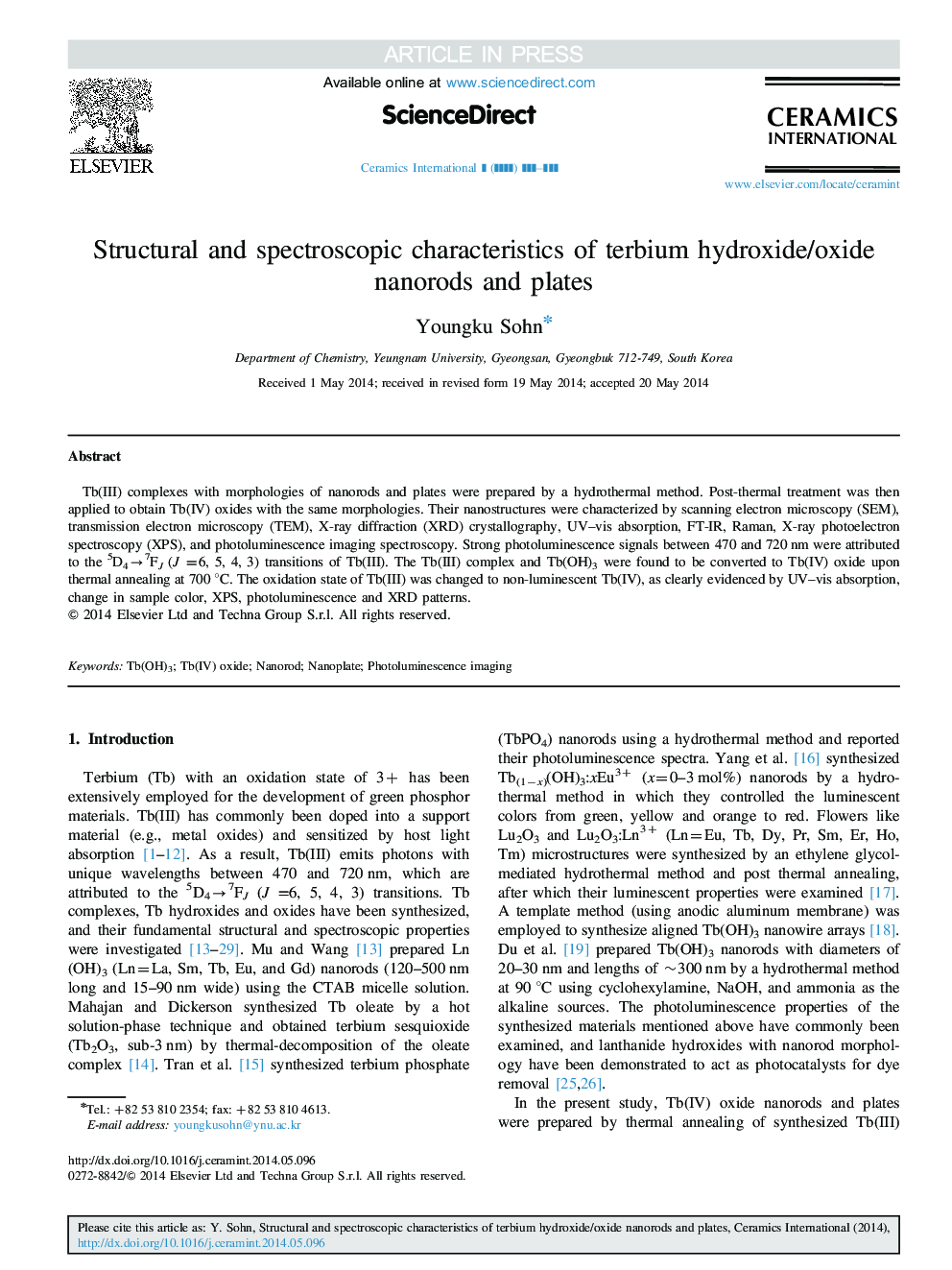| Article ID | Journal | Published Year | Pages | File Type |
|---|---|---|---|---|
| 10624947 | Ceramics International | 2014 | 9 Pages |
Abstract
Tb(III) complexes with morphologies of nanorods and plates were prepared by a hydrothermal method. Post-thermal treatment was then applied to obtain Tb(IV) oxides with the same morphologies. Their nanostructures were characterized by scanning electron microscopy (SEM), transmission electron microscopy (TEM), X-ray diffraction (XRD) crystallography, UV-vis absorption, FT-IR, Raman, X-ray photoelectron spectroscopy (XPS), and photoluminescence imaging spectroscopy. Strong photoluminescence signals between 470 and 720 nm were attributed to the 5D4â7FJ (J =6, 5, 4, 3) transitions of Tb(III). The Tb(III) complex and Tb(OH)3 were found to be converted to Tb(IV) oxide upon thermal annealing at 700 °C. The oxidation state of Tb(III) was changed to non-luminescent Tb(IV), as clearly evidenced by UV-vis absorption, change in sample color, XPS, photoluminescence and XRD patterns.
Related Topics
Physical Sciences and Engineering
Materials Science
Ceramics and Composites
Authors
Youngku Sohn,
